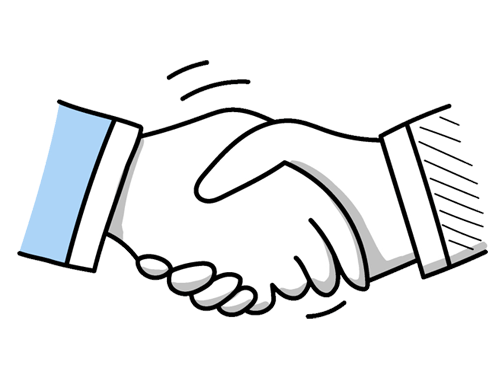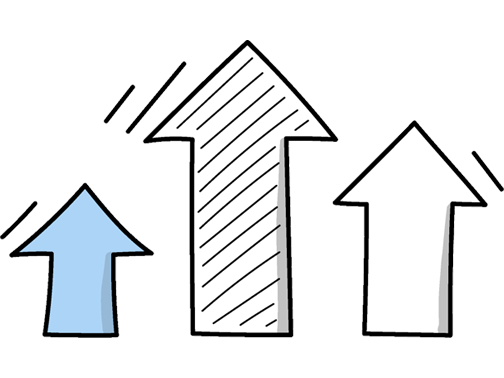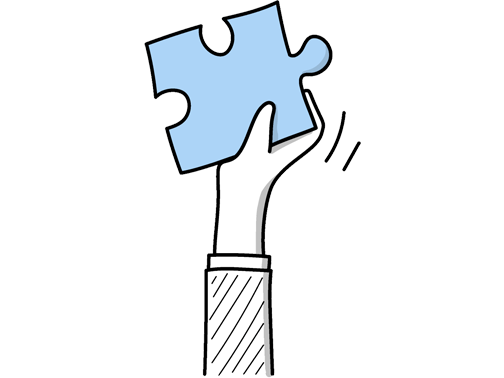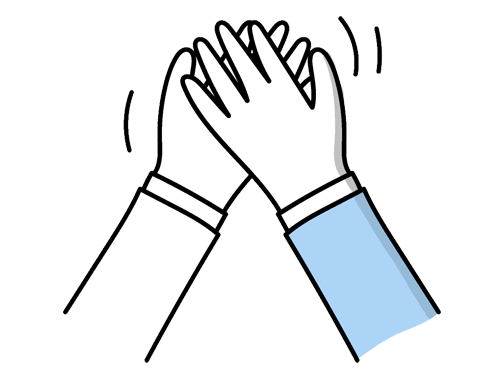Print Finishing Manager Interview Questions (2025 Guide)
Find out common Print Finishing Manager questions, how to answer, and tips for your next job interview
Practice Interviews Online - Identify your strengths and weakness in a realistic Print Finishing Manager mock interview, under 10 minutes
Practice Now »Print Finishing Manager Interview Questions
This interview question assesses your problem-solving skills and technical knowledge in handling equipment issues efficiently. You need to explain that you systematically identify the root cause, apply practical fixes quickly, and implement regular maintenance to prevent future malfunctions.
Example: When equipment malfunctions, I first assess the issue calmly to pinpoint what’s causing the problem. For example, once a finishing press was overheating due to a blocked vent, so I removed the obstruction quickly to get it running again. I also make a point of following up with regular checks and preventative maintenance to keep things running smoothly and avoid repeat issues.
What they want to know is how you stay current with industry trends and apply new technologies to improve efficiency or quality. You need to highlight a specific innovation you’ve used or researched, and explain its positive impact or your interest in its potential benefits.
Example: Recently, I’ve explored integrating digital embellishments like spot UV and foiling through UV inkjet technology, which adds a premium feel without slowing production. I’m also interested in sustainable coatings that enhance durability while being eco-friendly, reflecting growing client demand. These innovations not only elevate the finished product but also improve efficiency and align with industry trends towards sustainability and customization.
This interview question assesses your ability to lead and manage your team effectively by ensuring everyone follows important policies that maintain quality and safety. You should explain how you communicate policies clearly, lead by example, and monitor your team regularly to support and enforce compliance.
Example: I make it a priority to keep the team informed by discussing policies during regular meetings and one-to-ones, ensuring everyone knows what’s expected. I lead by example, showing why following procedures matters to quality and safety. If I notice any confusion or lapses, I step in with support or refresher training. This approach helps the team stay aligned and confident in their roles.
Hiring managers ask this question to see if you are proactive about learning and adapting to new technologies that can improve efficiency and quality. You should say you regularly follow industry publications, attend trade shows or webinars, and network with professionals to stay informed and apply new advancements in your work.
Example: I keep up with industry trends by regularly attending trade shows and networking with suppliers, which gives me hands-on experience with new equipment. I also subscribe to print industry journals and participate in online forums where professionals share insights. This way, I stay informed about innovations and can assess what might improve our processes effectively. For example, last year a demo at a show introduced me to a finishing technique that improved turnaround times significantly.
Hiring managers ask this question to assess your understanding of how digital technology impacts print finishing and your ability to adapt to industry changes. You need to explain how you would integrate digital tools like digital cutting or printing into processes, recognize trends toward personalized finishes, and describe how you would lead your team through these technological changes with appropriate training and support.
Example: The future of print finishing is increasingly connected to digital innovation, from automated workflow systems to smart quality control. These tools help us meet rising client expectations for speed and customization while maintaining craftsmanship. Leading a team through this shift means balancing new technologies with proven techniques, ensuring everyone feels confident and supported as we adapt to evolving demands. For example, integrating digital embossing lets us offer unique finishes that weren’t possible before.
Interviewers ask this to see if you understand the critical steps that guarantee a high-quality final product. You need to say you implement regular inspections, standardized procedures, and team training to catch errors early and maintain consistency.
Example: To ensure quality control in print finishing, I focus on clear communication with the team and consistent checks at each stage. For example, I regularly inspect samples to catch issues early and encourage feedback to improve processes. Keeping equipment well-maintained and training staff on best practices also helps maintain high standards throughout the workflow.
What they want to know is how you lead your team effectively to ensure deadlines are met without sacrificing quality or morale. You need to say that you set clear goals and communicate expectations upfront, use motivation techniques like recognition or incentives, and promptly address conflicts to keep the team focused and productive.
Example: To keep the team on track, I make sure everyone understands what’s needed and why it matters. I encourage open communication, so any issues come up early. When things get busy, I focus on boosting morale, whether it’s recognizing small wins or lending a hand myself. If conflicts arise, I address them quickly with clarity and fairness, keeping the focus on solutions to meet our deadlines together.
This question helps the interviewer understand your practical knowledge and hands-on experience with key print finishing processes that affect the final product’s quality. You need to briefly explain your familiarity with each technique and highlight how you’ve successfully applied them in past projects.
Example: In my previous role, I worked closely with different finishing processes—whether it was assembling booklets through saddle stitching, applying protective coatings to enhance durability, or creating unique shapes with precision cutting tools. I’ve coordinated these stages to ensure quality and efficiency, often troubleshooting to meet tight deadlines. For example, managing laminated menus that needed both a glossy finish and durability under heavy use taught me the value of balancing aesthetics with function.
This interview question assesses your ability to facilitate effective collaboration and prevent misunderstandings that can impact production quality and deadlines. You need to say you establish regular meetings and use clear, concise updates to keep everyone aligned and encourage open feedback between teams.
Example: I focus on keeping communication straightforward and consistent, encouraging my team to share updates regularly. For example, I hold brief daily check-ins and coordinate closely with departments like design and production to address any issues early. This helps everyone stay aligned and avoids misunderstandings, ensuring the finishing process runs smoothly and meets deadlines.
This interview question assesses your technical knowledge and ability to ensure efficient, safe operation of print finishing equipment. You need to explain how you calibrate machines to specifications, perform routine maintenance and troubleshooting, and consistently follow safety and quality protocols.
Example: Setting up print finishing equipment starts with carefully calibrating machines to match job specifications, checking all components for wear, and running test prints to ensure accuracy. I prioritize routine maintenance like cleaning and lubrication to prevent breakdowns and address issues quickly when they arise. Throughout, I make sure safety protocols and quality checks are strictly followed, so every finished product meets both client expectations and industry standards.
What they want to understand is how you approach conflict resolution and lead your team through challenges. You need to explain the cause of the conflict, the actions you took to resolve it, and the leadership skills you demonstrated, like empathy and impartiality.
Example: In a previous role, two team members disagreed over machine scheduling, which slowed production. I sat down with both individually to understand their concerns, then brought them together to find a fair compromise that balanced their workloads. This approach not only resolved the tension but also improved teamwork and efficiency. It’s important to listen carefully and encourage open communication to keep things running smoothly.
Hiring managers ask this question to see how well you handle stress and make effective decisions quickly, which is crucial in a fast-paced print finishing environment. You need to describe a specific situation where you assessed the problem rapidly, made a clear decision, and took action that had a positive outcome.
Example: Sure. In my previous role, a major machine broke down just before a tight deadline. I quickly assessed the situation, rerouted jobs to other machines, and coordinated with the team to keep production moving. It was intense, but staying calm and decisive ensured we met the deadline without compromising quality. Moments like that really highlight the importance of quick thinking in print finishing.
Questions like this assess your ability to proactively manage quality and safety by recognizing potential issues before they arise. You need to explain that you regularly inspect equipment, train staff on best practices, and implement standard procedures to minimize errors and hazards.
Example: In print finishing, I start by thoroughly assessing each stage to spot potential issues, like machine faults or material defects. I work closely with the team to maintain clear communication, ensuring everyone knows safety procedures. Regular equipment checks and training sessions help prevent downtime and errors. For example, catching a misaligned cutter early saves time and reduces waste, keeping both quality and schedules on track.
This question gauges your commitment to workplace safety and adherence to industry regulations, which are crucial in preventing accidents and legal issues. You need to explain that you implement regular training, conduct frequent safety audits, and enforce strict protocols to maintain compliance consistently.
Example: In my role, I keep safety at the forefront by regularly reviewing procedures and making sure the team understands their importance. I hold briefings to discuss any changes in regulations and encourage open communication about potential hazards. For example, when we updated machinery, I organised hands-on training to ensure everyone was confident and compliant, which helped maintain a safe and efficient workplace.
Hiring managers ask this question to see if you stay informed about industry developments and can adapt strategies accordingly. You need to mention advancements like digital finishing techniques, highlight sustainability efforts using eco-friendly materials, and recognize market shifts toward shorter print runs and faster turnaround times.
Example: In print finishing, advances like digital finishing solutions are really changing the game, making processes faster and more flexible. At the same time, there’s a stronger push towards eco-friendly materials and waste reduction, responding to growing sustainability expectations. Customers also want more customization and shorter turnaround times, so staying adaptable and integrating smart technology is key to meeting those evolving demands in today’s market.
Employers ask this to see how adaptable and problem-solving you are under pressure. You should say you stay calm, assess the impact, communicate promptly with your team, and adjust plans efficiently to meet new demands.
Example: When project requirements or deadlines shift, I stay calm and assess what’s needed to adapt efficiently. I communicate clearly with the team to realign priorities and resources. For example, when a last-minute design change came in, we adjusted schedules without compromising quality by reallocating tasks and keeping everyone informed. Flexibility combined with proactive coordination helps keep projects on track despite surprises.
Questions like this assess your ability to manage client relationships and improve project outcomes through constructive feedback. You need to explain that you listen carefully to understand the feedback, ask questions if needed, and then adapt processes accordingly while keeping clients informed about the changes and progress.
Example: When I receive feedback from clients or stakeholders, I listen carefully to understand their concerns fully. I find it’s important to stay open to changes that can improve the final product. For example, if a client suggests a different coating for durability, I discuss practical options with the team and keep the client updated on how we’ll implement the change to meet their expectations. Clear communication helps maintain trust throughout the process.
Hiring managers ask this question to see how you build trust and ensure reliable supply chains. You need to say that you communicate regularly, address issues promptly, and foster long-term partnerships through transparency and mutual goals.
Example: Building strong relationships with suppliers means open and honest communication, understanding their challenges, and working together to find solutions. I regularly check in, not just about orders but about mutual improvements. For example, when a supplier faced delays, we collaborated on adjusting schedules, which strengthened trust and ensured deadlines were met. It’s about partnership, not just transactions, keeping both sides aligned and reliable.
Hiring managers ask this to understand how you support and develop your team to meet production goals. You should say you regularly evaluate individual strengths and weaknesses through performance metrics and provide targeted training or feedback to help each member improve.
Example: I believe in regularly checking in with my team, understanding their strengths and areas to develop. I set clear expectations and provide constructive feedback, often through informal chats or during daily briefings. For example, when someone struggled with a finishing technique, I organized a quick hands-on session, which boosted their confidence and efficiency. Encouraging open communication helps us grow together and meet our goals effectively.
This question helps the interviewer see how you handle real work challenges and solve problems under pressure. You need to clearly describe a specific issue you encountered, explain the actions you took to fix it, and share the positive results or lessons learned from the experience.
Example: In a previous role, we faced frequent delays due to inconsistent drying times affecting finishing quality. I reviewed the process, adjusted ventilation and drying schedules, and trained staff on monitoring conditions. This reduced errors and turnaround times noticeably. It taught me the value of observing subtle process details and the importance of clear communication with the team to maintain quality under pressure.
What they want to know is how well you can make complicated technical details understandable and useful to people without a technical background. You need to explain clearly how you simplified a complex process for your team, adjusted your explanation based on their knowledge, and achieved a positive result like better compliance or feedback.
Example: In my previous role, I had to explain the intricacies of a new print finishing process to the sales team. I broke down the technical jargon into simple, relatable terms and used visuals to show the benefits. This helped them understand the value clearly, leading to better client conversations and increased orders. Tailoring the message to their background made all the difference in getting everyone on the same page.
Employers ask this question to see if you understand current industry issues and how you proactively solve problems. You need to mention specific challenges like supply chain delays or new technologies, then explain how you’ve managed these issues, and show awareness of environmental regulations affecting print finishing.
Example: The print finishing industry is navigating challenges like supply chain delays and rapid tech changes. Staying adaptable is key—I’ve managed by building strong supplier relationships and investing in flexible equipment. There’s also growing pressure to meet environmental standards, so adopting sustainable materials and processes has become essential. Balancing innovation with compliance ensures we deliver quality while staying ahead in a shifting market.
Questions like this assess your ability to organize and prioritize tasks effectively under pressure. You need to explain that you use clear planning, set deadlines, and communicate with your team to ensure all projects stay on track.
Example: When juggling multiple print finishing projects, I prioritise clear communication and organisation. I break down tasks, set realistic deadlines, and stay flexible to adapt if something shifts unexpectedly. For example, during a busy season, I coordinated with my team to reschedule less urgent jobs, ensuring critical deadlines were met without compromising quality. It’s about staying calm, focused, and keeping everyone aligned.
What they want to know is how you use technology to make print finishing more efficient and accurate. You should mention specific software like Enfocus Switch or Esko Automation Engine and explain how you use tools like barcode scanning to track jobs and reduce errors.
Example: I usually work with software like Printrix and Heidelberg’s Prinect to streamline scheduling and quality checks. These tools help keep operations smooth and reduce errors. In one role, I quickly learned a new finishing workflow system when we upgraded our equipment, which cut setup times significantly. Embracing these technologies really helps the team stay efficient and maintain high-quality output consistently.
This question aims to assess how effectively you communicate and manage information flow within your team. You need to say that you use regular meetings, clear documentation, and digital tools to ensure everyone stays updated on project changes.
Example: I keep the team updated through regular briefings and clear, timely emails to ensure everyone’s on the same page. I also encourage open communication, so if anything changes mid-project, the team can quickly adapt. For example, during a recent tight deadline, daily check-ins helped us address issues early and stay on track without confusion. It’s about creating a steady flow of information everyone can rely on.
Ace your next Print Finishing Manager interview with even more questions and answers
Common Interview Questions To Expect
The interviewer is looking for a candidate to demonstrate their qualifications, skills, experience, and enthusiasm for the role. Answers should highlight relevant achievements and how they align with the company's needs.
Example: I have over 5 years of experience in print finishing, managing teams and ensuring projects are completed on time and within budget. I am confident in my ability to streamline processes and improve efficiency in the department. I am excited about the opportunity to bring my expertise to your team and help drive success in the company.
The interviewer is looking for insight into your long-term aspirations, motivation, and commitment to the role. Be honest, specific, and align your goals with the company's objectives.
Example: My career goal is to continue growing in the print finishing industry, eventually becoming a senior manager or director. I am motivated by the opportunity to lead a team and contribute to the success of the company. I believe my skills and experience align well with the company's objectives of delivering high-quality print finishing services.
The interviewer is looking for a clear explanation of the reasons behind your decision to change career paths. Be honest, highlight relevant skills and experiences, and show how the change aligns with your long-term goals.
Example: I decided to change career paths because I wanted to pursue a role that allowed me to utilize my strong organizational skills and attention to detail, which I honed during my time as a Print Finishing Manager. I also wanted to explore new opportunities for growth and development in a different industry. Ultimately, this change aligns with my long-term goal of continuously challenging myself and expanding my skill set.
The interviewer is looking for your commitment to ongoing learning and growth in your field. You can answer by discussing courses, certifications, conferences, or other ways you plan to stay current in your industry.
Example: I'm always looking for ways to stay up-to-date in the print finishing industry. I plan on attending relevant conferences and workshops to expand my knowledge and skills. I'm also considering pursuing certifications to further enhance my expertise.
The interviewer is looking for your level of interest in the company and the role, as well as your curiosity and preparedness. You can ask about company culture, team dynamics, growth opportunities, or specific projects.
Example: Yes, I was wondering about the team dynamics within the print finishing department. Can you tell me more about the company culture and how it supports professional growth for employees? Also, are there any upcoming projects that the print finishing team will be working on that I should be aware of?
Company Research Tips
The company's website is a goldmine of information. Look for details about the company's history, mission, vision, and values. Pay special attention to the 'About Us', 'Our Team', and 'News' sections. These can provide insights into the company culture, key personnel, and recent developments. For the role of Print Finishing Manager, also look for any information related to their print production processes, technologies used, and quality standards.
Tip: Look for any industry-specific terminology or jargon used on the website and make sure you understand it. This can help you speak the company's language during the interview.
Social media platforms like LinkedIn, Facebook, Twitter, and Instagram can provide a more informal view of the company. Look at the company's posts, as well as comments from customers and employees. This can give you a sense of the company's public image, customer satisfaction, and employee morale. For the Print Finishing Manager role, LinkedIn could be particularly useful to understand the professional background of people in similar roles or the team you would be working with.
Tip: Use LinkedIn's 'Advanced Search' feature to find current and former employees you can reach out to for informational interviews.
Stay updated with the latest news and trends in the print industry. Websites like PrintWeek, Printing News, and Print Industry Blog can be useful sources. Understanding the industry's challenges and opportunities can help you discuss how you, as a Print Finishing Manager, can contribute to the company's success.
Tip: Use Google Alerts to stay updated with the latest news about the company and the print industry.
Understanding the company's competitors can give you insights into the market dynamics and the company's unique selling proposition. Look for information on the competitors' products, services, and customer reviews. For a Print Finishing Manager role, understanding how competitors manage their print finishing processes could provide useful talking points during the interview.
Tip: Use tools like SimilarWeb or Alexa to get insights into competitors' web traffic and customer demographics.
What to wear to an Print Finishing Manager interview
- Dark coloured suit
- White or light coloured shirt
- Conservative tie
- Polished dress shoes
- Minimal jewellery
- Neat and clean appearance
- Avoid strong perfumes or colognes
- Carry a professional bag or briefcase





